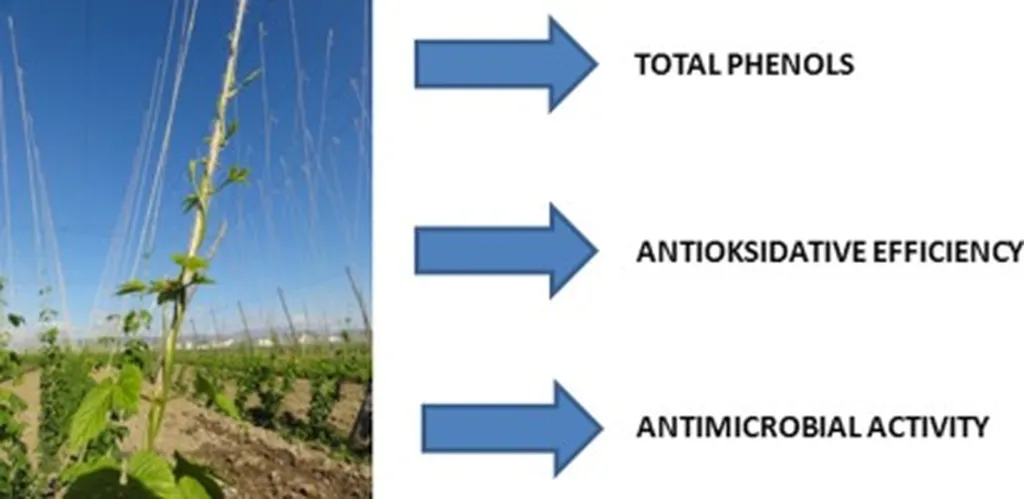In the heart of Italy, researchers at the University of Parma have been delving into the untapped potential of hop leaves, a resource often overshadowed by its more famous counterpart, the hop cone. Leandra Leto, a lead author from the Department of Food and Drug, has been spearheading a study that could reshape our understanding of hop leaves and their applications, particularly in the realms of antimicrobial and antioxidant activities.
The study, published in the *Journal of Sustainable Agriculture and Environment* (translated as ‘Journal of Sustainable Agriculture and Environment’), focuses on the ‘Cascade’ variety of hop leaves, harvested monthly throughout the growing season. The research team characterized the extracts for their (poly)phenolic content, antioxidant capacity, and antimicrobial activity, revealing a dynamic profile that changes with the plant’s life cycle.
“Hop leaves have been largely overlooked, but our research shows they are a treasure trove of bioactive compounds,” Leto explained. The team identified 29 distinct compounds, with their concentrations fluctuating throughout the growing season. This variability suggests that the timing of harvest could be crucial for maximizing the desired bioactive compounds.
One of the most compelling findings was the antimicrobial activity exhibited by the leaf extracts, particularly against Listeria monocytogenes and Staphylococcus aureus. These bacteria are significant concerns in the food industry, and the early stages of the plant’s growth showed the most promise in combating these pathogens.
The implications for the agricultural and food industries are substantial. As consumers increasingly demand natural and sustainable solutions, hop leaves could emerge as a valuable resource for antimicrobial and antioxidant applications. This could lead to the development of new food preservatives, dietary supplements, or even pharmaceuticals, all derived from a previously underutilized part of the hop plant.
Moreover, the study highlights the importance of understanding the temporal dynamics of bioactive compounds in plants. As Leto noted, “This research opens up new avenues for exploring the potential of other plant parts and species that have been traditionally overlooked.”
The findings could also influence farming practices, encouraging growers to consider the optimal timing for harvesting specific bioactive compounds. This could lead to more targeted cultivation strategies, ultimately enhancing the value and sustainability of hop farming.
In the broader context, this research underscores the need for continued exploration and innovation in the field of agritech. As we strive for more sustainable and efficient agricultural practices, studies like this one pave the way for discovering new resources and applications, driving the industry forward.
The study, “Characterization of Bioactive Compounds and Evaluation of Antimicrobial Activity of Humulus lupulus (L.) cv. Cascade Leaves Throughout the Growing Season,” was published in the Journal of Sustainable Agriculture and Environment, offering a glimpse into the untapped potential of hop leaves and setting the stage for future developments in the field.

